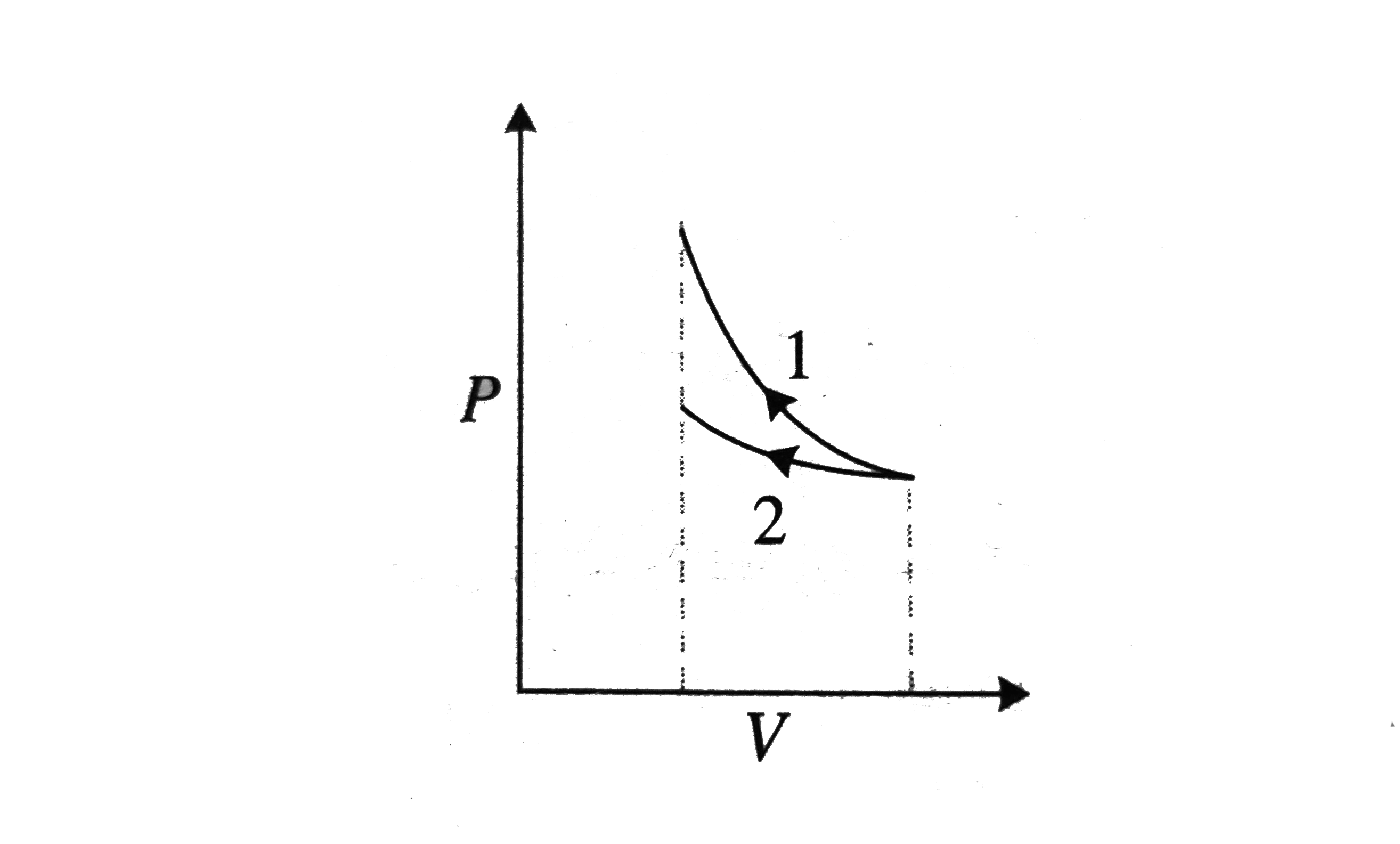A certain mass of a gas is compressed first adiabatically, and then isothermally. In both cases, the initial state of the gas is the same. Is the work done W1 in the first case greater than the work done W2 in the second case ? Explain.

Yes, because the area between curves 1 and trhe V-axis is greater than that between curve 2 and the V-axis and the work done is given by the area between the p−V curve and the V-axis.
Topper's Solved these Questions
- KINETIC THEORY OF GASES AND FIRST LAW OF THERMODYNAMICSBook:CENGAGE PHYSICSChapter:KINETIC THEORY OF GASES AND FIRST LAW OF THERMODYNAMICSExercise:Subjective
Explore 22 Videos
- KINETIC THEORY OF GASES AND FIRST LAW OF THERMODYNAMICSBook:CENGAGE PHYSICSChapter:KINETIC THEORY OF GASES AND FIRST LAW OF THERMODYNAMICSExercise:Single Correct
Explore 140 Videos
- KINETIC THEORY OF GASES AND FIRST LAW OF THERMODYNAMICSBook:CENGAGE PHYSICSChapter:KINETIC THEORY OF GASES AND FIRST LAW OF THERMODYNAMICSExercise:Exercise 2.1
Explore 20 Videos
- KINETIC THEORY OF GASESBook:CENGAGE PHYSICSChapter:KINETIC THEORY OF GASESExercise:Compression
Explore 2 Videos
- LINEAR AND ANGULAR SIMPLE HARMONIC MOTIONBook:CENGAGE PHYSICSChapter:LINEAR AND ANGULAR SIMPLE HARMONIC MOTIONExercise:Multiple Correct Answer Type
Explore 9 Videos
Similar Questions
A gas is first compressed adiabatically and then isothermally. In both cases, the initial state of the gas is the same. Find in which case more work is done on the gas.
View SolutionA certain mass of nitrogen was compressed η=5.0 times (in terms of volume), first adiabatically, and then isothermally. In both cases the initial state of the gas was the same. Find the ratio of the respective works expended in each compression.
View Solution
Knowledge Check
5.6 liter of helium gas at STP is adiabatically compressed to 0.7 liter. Taking the initial temperature to be T1, the work done in the process is
A98RT1B32RT1C158RT1D92RT1A spring, which is initially in its unstretched condition, is first stretched by a length x and then again by a further length x. The work done in the first case is W1 and in the second case is W2.
AW2=W1BW2=2W1CW2=3W1DW2=4W1A fixed mass of a gas is first heated isobarically to double the volume and then cooled isochorically to decrease the temperature back to the initial value. By what factor would the work done by the decreased, had the process been isothermal?
A2B12Cln 2Dln 3
If a certain mass of gas is made to undergo separately adiabatic and isothermal expansions to the same pressure, starting form the same initial conditions of temperature and pressure, then, as compared to that of isothermal expansion, in the case of adiabatic expansion, the final
View Solution400 J of work is done on a gas to reduce its volume by compression adiabatically. What is the change in internal energy of the gas?
View SolutionLet QandW denote the amount of heat given to an ideal gas the work done by it in an adiabatic process.
View SolutionAt N.T.P. one mole of diatomic gas is compressed adiabatically to half of its volume λ=1.41. The work done on gas will be
View SolutionA spring, which is initially in its unstretched condition, is first stretched by a length x and then again by a further length x. The work done in the first case is W1 and in the second case is W2. Then
View Solution

